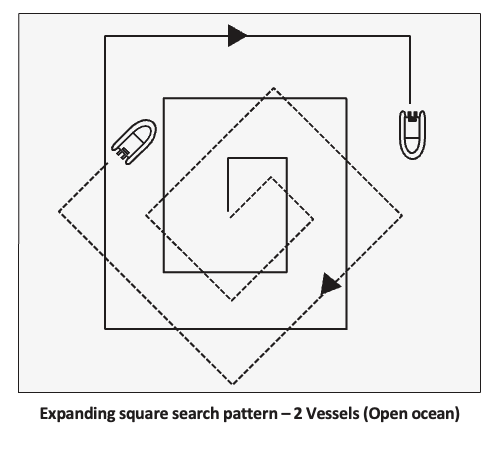Purpose
To provide guidelines regarding expanding square search patterns.
Policy
Surf Life Saving NSW (SLSNSW) provides the following guidelines to assist personnel in effectively performing their duties.
Procedure
This procedure is referred to as an expanding square search as it begins at the reported position or most probable location and expands outwards in concentric squares. It is a very precise pattern and requires accurate navigation.
The square search pattern is used when the target is known to be in a relatively small area and the current direction is unknown. This search pattern provides uniform coverage and should be utilised only when operating in the open ocean.
Search and rescue crews should follow the following steps when utilising this search pattern:
- The search pattern shall begin at the last known position.
- Crews shall take a visual reference or drop a buoy and anchor as a surface marker. This will then provide a continuous reference point during the search.
- The search pattern should begin so that there is a continuous overlap of vision throughout the search.
- The first two legs are held to a distance equal to the track spacing and every succeeding two legs are increased by a further track space. Turns may be to the left or right at a 90 degree angle, depending upon the observer positions.
- To ensure that each two legs are as accurate as possible the following methods may be used:
- Distance – Each two legs are of equal length.
- Time and Speed – Each two legs are to occur over the same amount of time and at the same speed.
Expanding square search patterns utilising more than one vessel should follow the same steps as one vessel operations but include the following considerations:
- The second vessel is to commence the same pattern but orientated 45°.
- If the same speed is used for both vessels, the first vessel must be allowed to complete at least 3 search legs before the second commences to avoid risk of collision.




